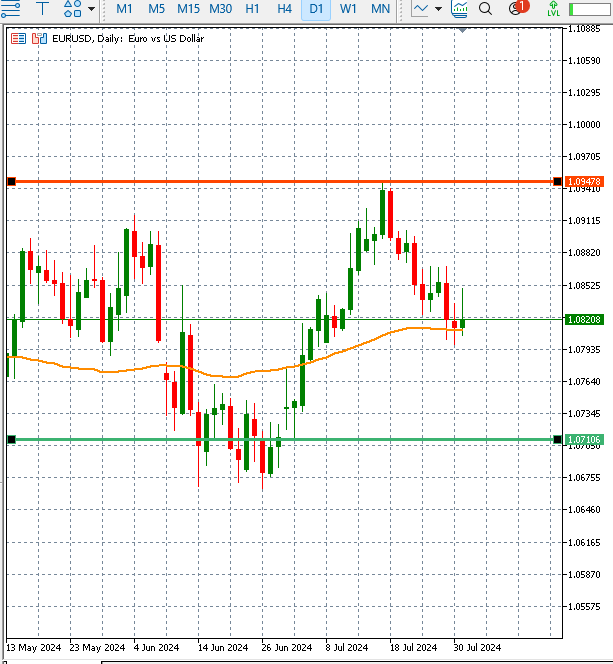The Eurozone's inflation has shifted in a direction that many had not anticipated, causing concern among traders and investors about the implications for the European Central Bank, which has been aggressively cutting rates. Many traders are asking themselves if the ECB will pause the process of cutting rates, and some wonder if they will adopt a bit of hawkish tone in their commentary.
Today’s Eurzone’s Inflation Print
The headline inflation number that was released earlier today surprised traders and investors, and it was certainly not a pleasant surprise at all. The Eurozone’s inflation data unexpectedly moved higher to 2.6% in July, and this is despite the fact that price growth in the services sector eased off somewhat. Keep in mind, the Eurozone, as a region, heavily relies on the services sector, making the services sector's inflation reading crucial. However, a turbulent period can easily obscure this information, indicating a negative trend in inflation. Smart Money, which always pays attention to very little detail, also didn't feel too comfortable with today's reading. The reason is that the core inflation data, which excludes more volatile factors such as energy, also moved in the wrong direction and printed a reading of 2.9% in July against the expectations of 2.8%. On the positive side, this particular number remained unchanged compared to the previous reading, as the core inflation data for the previous month also remained at 2.9%. Therefore, a broader perspective reveals that, despite the lack of improvement, the original results remained consistent. For me, this is significant, and I'll explain later.
What Does The Eurozone's Higher Inflation Data Mean?
Smart money and central banks always focus on one factor: don't let a single print of economic data overwhelm you; it's the trend that initiates change, and a single print alone doesn't make a difference. It can only arouse speculators' excitement about potential outcomes, but in reality, the situation is quite different. So, I do think that the President of the European Central Bank, Christine Lagarde, will do exactly what she does best, which is a calibrated response. One print is unlikely to change the situation, and the Central Bank is already taking things very easy, having kept the rates unchanged in its last meeting in June and left the door open for another rate cut in September. The governing council will very closely monitor things and keep its dynamic view of inflation.
What Would Happen To Euro Now?
The Euro-dollar pair has gained significant strength today, and this is purely because speculators believe that the bank will deliver somewhat more hawkish commentary in light of the inflation data. From a technical perspective, what is important is whether the price will stay above the 50-day SMA or not. If the price closes above this, it would very much confirm that a new trend is in place, which means we are likely to see higher highs and the price is more than likely to move towards the resistance area shown on the chart. However, if the price fails to stay above the 50-day SMA price, a move would begin towards the support line (shown in green), where we are likely to see some bigger orders.
Euro-USD chart by Zaye Capital Markets
This article is from an unpaid external contributor. It does not represent Benzinga's reporting and has not been edited for content or accuracy.
© 2025 Benzinga.com. Benzinga does not provide investment advice. All rights reserved.
Trade confidently with insights and alerts from analyst ratings, free reports and breaking news that affects the stocks you care about.
